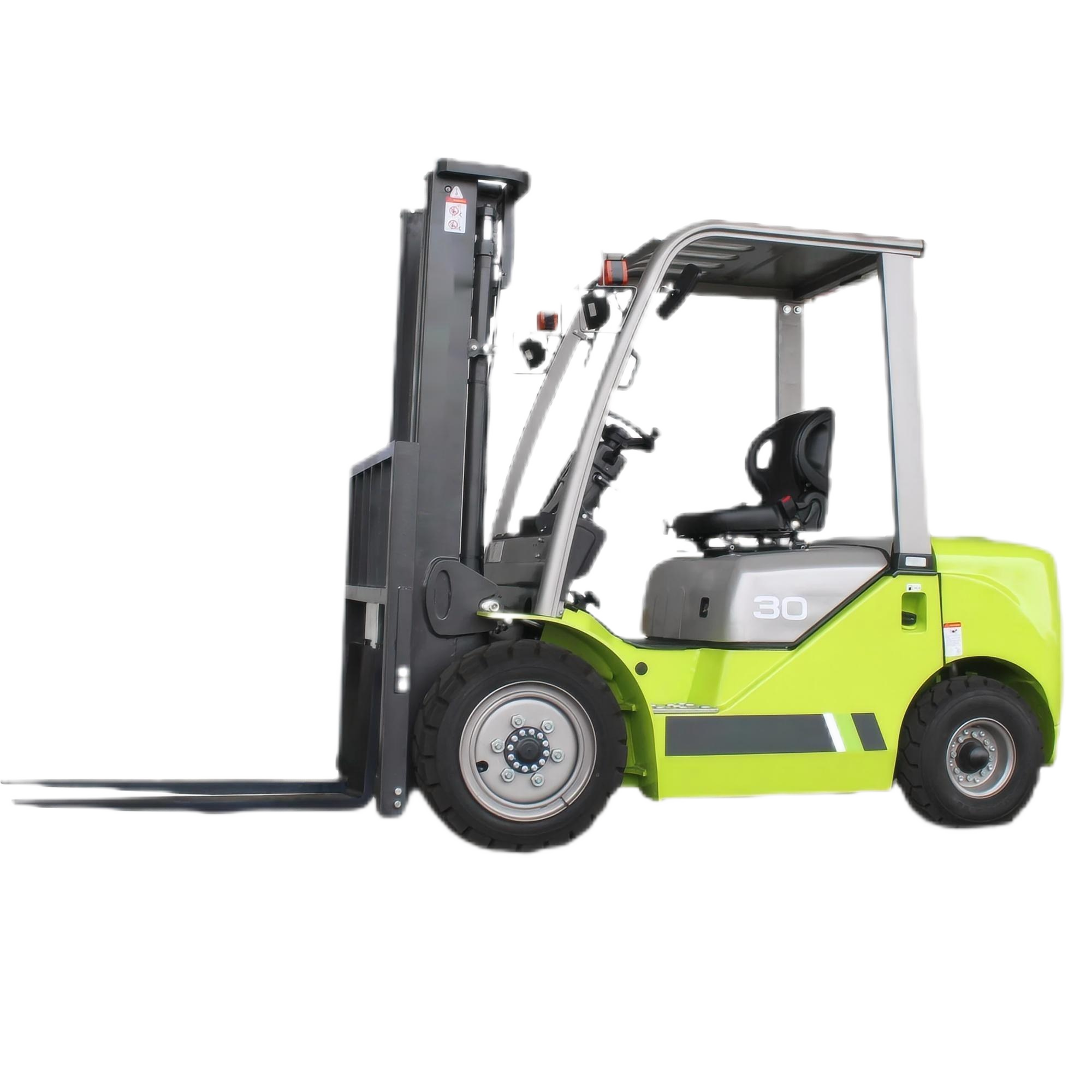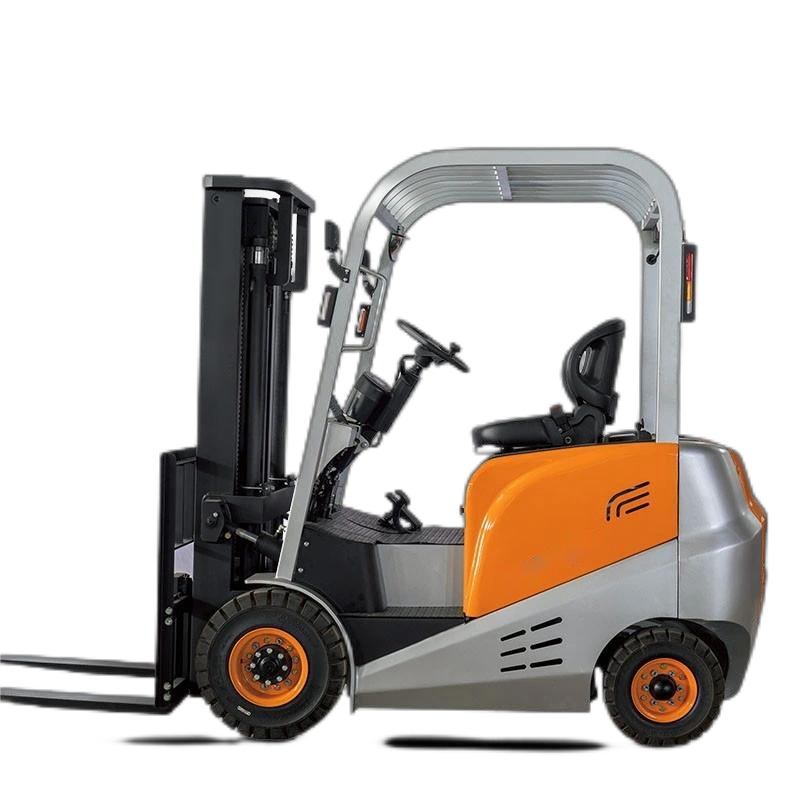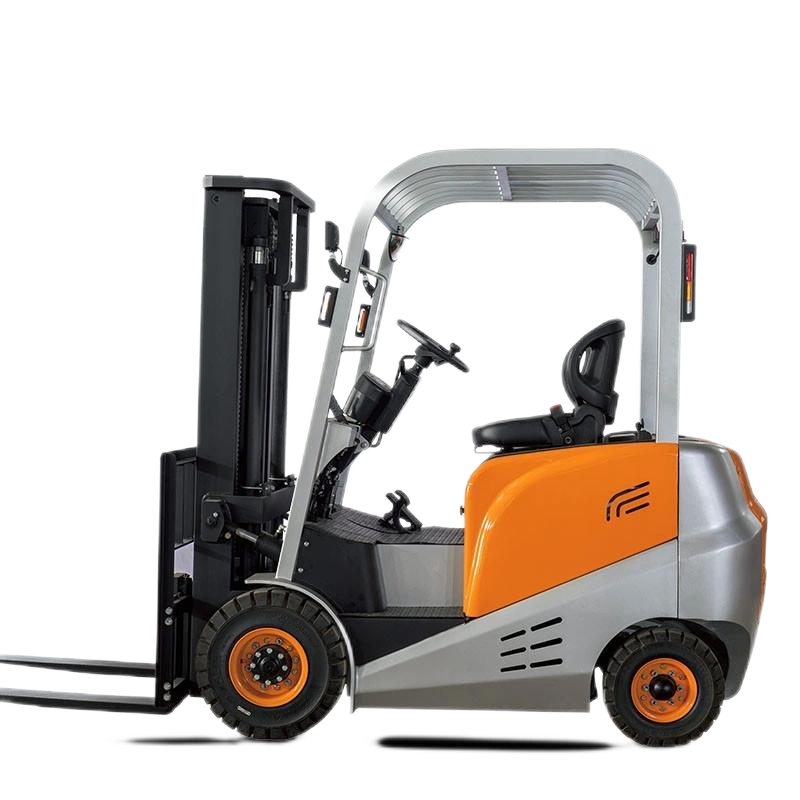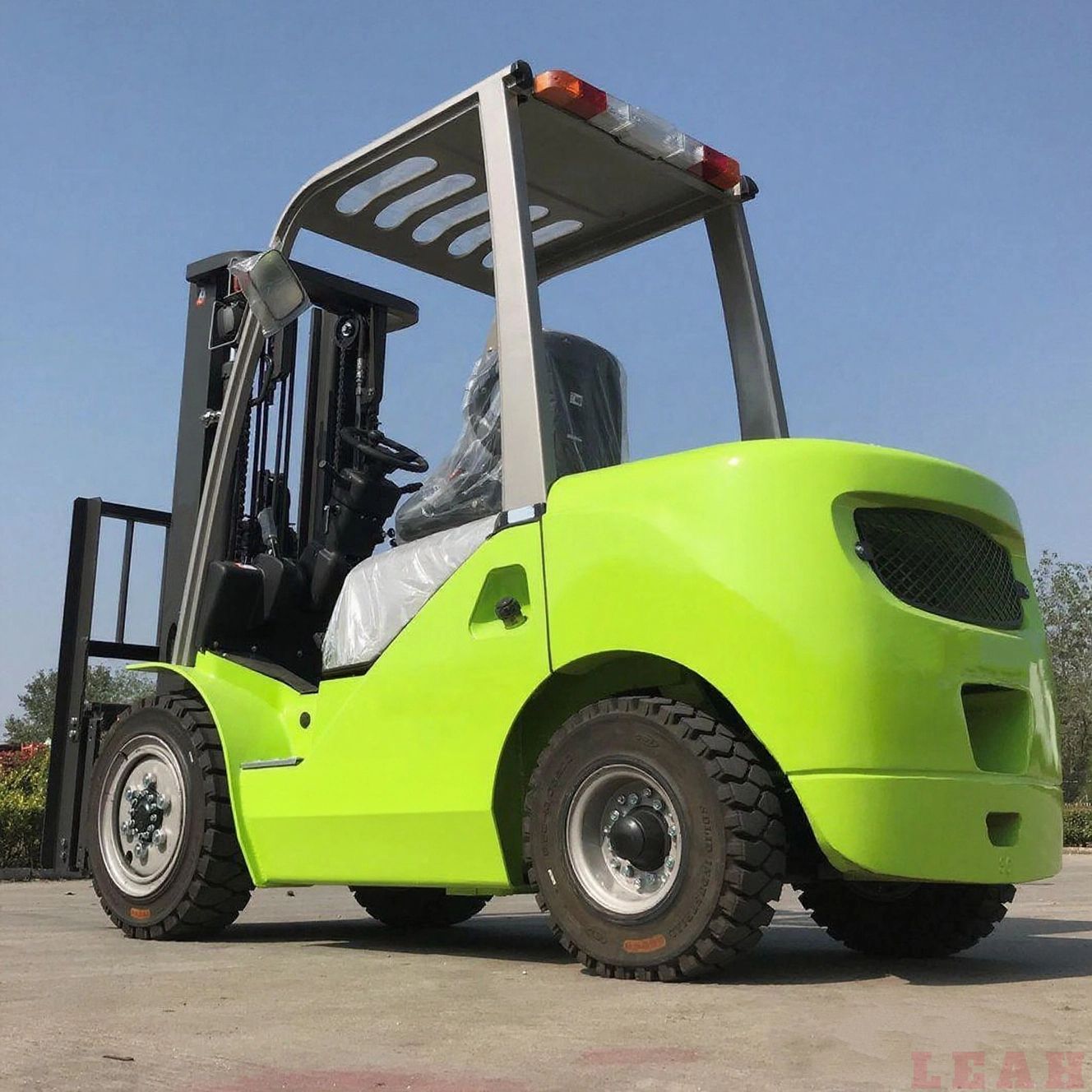As a core handling equipment in scenarios such as logistics warehousing and production workshops, the operation process of electric forklifts must balance efficiency, safety, and equipment maintenance. Oversight in any link may lead to safety accidents or equipment failures. The following details the key points of electric forklift operation from three dimensions: the full operation process (pre-operation preparation, in-operation handling, post-operation conclusion), core safety regulations, and handling of common problems.
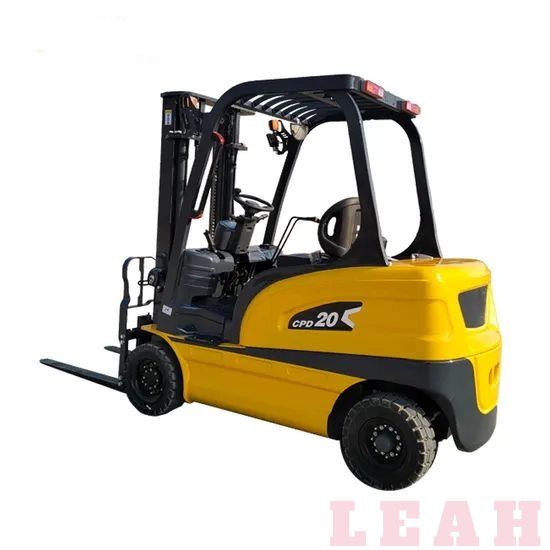
I. Specifications for the Full Operation Process of Electric Forklifts
(1) Pre-operation: Preparation and Inspection (Key Link to Avoid Over 90% of Operation Risks)
Before operation, it is necessary to ensure that "personnel, equipment, and environment" all meet safety standards. The specific inspection items are as follows:
| Inspection Category | Inspection Content | Standard Requirements |
|---|---|---|
| Personnel Preparation | Operational Qualification | Must hold the Special Equipment Operator Certificate (for forklifts); unqualified personnel are strictly prohibited from operating. |
| Personal Protection | Wear non-slip work shoes and work clothes; long hair must be tucked into a work cap; loose clothing is strictly prohibited (to prevent entanglement in equipment). | |
| Status Confirmation | Operating under the influence of alcohol, fatigue, or after taking drugs (drugs that affect judgment) is strictly prohibited; ensure good personal mental state. | |
| Equipment Inspection | Battery System | 1. Battery Power: The power display on the instrument panel shall be ≥ 80% (operation is strictly prohibited when below 20% to avoid damage from excessive battery discharge); 2. Battery Connection Wires: No looseness or corrosion; the battery cover is well-sealed; 3. Charging Port: No foreign matter blockage; the dust cover closes normally. |
| Control System | 1. Steering Wheel: Rotates flexibly without jamming or looseness; 2. Pedals (Accelerator, Brake, Clutch): Normal stroke, smooth return, and effective brake performance; 3. Control Levers (Lifting, Tilting, Steering): Accurate movement without jamming or abnormal noise. | |
| Safety Devices | 1. Warning Lights and Horn: Clear sound and bright light when turned on; 2. Rearview Mirrors: Properly adjusted position with unobstructed view; 3. Safety Belt: Secure buckle without damage; 4. Limiting Devices: Normal functions of lifting height limit and forward/backward tilting limit. | |
| Working Devices | 1. Forks: No deformation or cracks; no looseness in the connecting bolts of the fork carriage; 2. Chains: Sufficient lubrication, no broken links or rust, and moderate tightness (sag ≤ specified value); 3. Hydraulic System: Normal hydraulic oil level (within the scale line of the observation window), no leakage (no oil stains at the oil cylinder and oil pipe interfaces). | |
| Environment Inspection | Operation Area | 1. Ground: No water accumulation, oil stains, or obstacles (such as wires, tools); the channel width shall be ≥ forklift turning radius + 0.5m; 2. Lighting: Illumination in warehouses and workshops shall be ≥ 50lux; turn on the forklift headlights in dim areas; 3. Safety Signs: Speed limit signs for channels, no-entry area signs, and load height limit signs for goods stacking are clearly visible. |
(2) In-operation: Operation Points and Safety Principles
During operation, the core principles of "slow start, stable operation, and frequent observation" must be followed, with focus on the following links:
1. Start-up and Driving
- Before Starting: Sound the horn to warn; check for personnel and obstacles around; after confirming safety, slowly release the brake and start smoothly (avoid sudden acceleration to prevent goods from shaking).
- Driving Speed: Adjust according to the environment. When unloaded, the speed shall be ≤ 5km/h in warehouses and ≤ 3km/h in workshop channels; when loaded, reduce the speed by 30%. Slow down in advance when turning (≤ 2km/h) to avoid goods tipping over due to centrifugal force.
- Driving Route: Prioritize designated channels; strictly prohibit passing through crowded areas. When crossing thresholds or ramps (slope ≤ 15°), pass vertically to avoid one-sided force on the forks.
2. Goods Loading and Unloading (Link Prone to Accidents)
- Before Forking Goods: Adjust the distance between the forks so that the forks are symmetrically distributed on both sides of the goods' center of gravity (to avoid unbalanced loading); the tips of the forks must be inserted into the bottom of the goods; using only the fork tips to lift goods is strictly prohibited.
- Lifting and Lowering: Operate the control lever slowly when lifting; the height of goods from the ground shall be ≤ 30cm (when driving) to avoid the forklift's center of gravity shifting upward due to excessive height. Lower the goods smoothly to the ground; sudden lowering to impact the forks is strictly prohibited.
- Goods Stacking: Confirm that the ground is level and the bottom of the goods is in contact with the ground when stacking. For multi-layer stacking, the upper layer of goods must be aligned with the lower layer; exceeding the width or height limit is strictly prohibited (the height of goods shall be ≤ 80% of the forklift's lifting height to avoid blocking the view).
3. Handling of Special Scenarios
- Obstructed View: If the goods are too high to block the forward view, drive in reverse (at low speed) and arrange for personnel to direct.
- Operation on Ramps: When going uphill, the forks shall be in the front; when going downhill, the forks shall be at the back (to prevent goods from sliding down). Turning or parking on ramps is strictly prohibited.
- Avoiding Personnel: When encountering personnel, sound the horn in advance and slow down; maintain a safe distance of more than 1m. Passing directly in front of or behind personnel is strictly prohibited.
(3) Post-operation: Conclusion and Maintenance
After operation, proper equipment return and basic maintenance must be done to prepare for the next operation:
- Equipment Return: Park the forklift in the designated area (level ground, no fire sources); lower the forks to the ground (5-10cm from the ground); turn off the power switch and pull out the electric forklifts key. If not used for a long time (more than 24 hours), recharge the battery (the battery temperature shall be ≤ 45℃ during charging to avoid overcharging).
- Cleaning and Inspection: Clean up debris and oil stains on the forks; check for leakage in the hydraulic system and damage to the tires. If abnormalities are found (such as abnormal noise, brake failure), immediately post a "Faulty - Not for Use" sign and report for maintenance.
- Operation Records: Fill in the Electric Forklift Operation Log, recording the operation duration, goods weight, and equipment abnormalities (to facilitate problem tracing).
II. Core Safety Taboos (Red Lines That Must Not Be Crossed)
- Overloading Prohibited: The rated load capacity of the forklift is marked on the side of the vehicle body; exceeding this capacity is strictly prohibited (e.g., a 3-ton forklift must not lift 4-ton goods). Overloading may cause damage to the hydraulic system, deformation of the forks, or even forklift overturning.
- Carrying Personnel Prohibited: Carrying personnel on electric forklifts (except for special models with passenger platforms) is strictly prohibited. Standing on the forks or fork carriage is absolutely forbidden (even for short-distance movement).
- Sudden Operations Prohibited: Sudden acceleration, sudden braking, and sudden steering may cause goods to tip over and battery connection wires to loosen, and will shorten the forklift's service life in the long run.
- Unregulated Charging Prohibited: A dedicated charger must be used for charging; mixing chargers of different models is strictly prohibited. Open the battery cover for ventilation during charging to avoid hydrogen accumulation (hydrogen is generated when charging the electric forklift battery, which is prone to explosion when exposed to fire sources). Smoking and stacking flammable materials in the charging area are strictly prohibited.
III. Common Operation Problems and Solutions
| Common Problem | Possible Causes | Solutions |
|---|---|---|
| Forklift Deviates When Driving | 1. Uneven air pressure in left and right tires; 2. Loose tie rods in the steering system | 1. Check the tire air pressure and inflate to the standard value (refer to the forklift manual); 2. Stop operation and contact maintenance personnel to adjust the steering tie rods. |
| Slow Fork Lifting | 1. Insufficient hydraulic oil; 2. Hydraulic pump failure; 3. Insufficient chain lubrication | 1. Add hydraulic oil to the scale line of the observation window; 2. If there is no improvement, turn off the power and report for maintenance; forced operation is strictly prohibited. |
| Brake Failure | 1. Excessive brake pedal stroke; 2. Brake fluid leakage; 3. Worn brake pads | Immediately stop operation, pull the handbrake, set up warning signs around the forklift, and contact maintenance personnel for inspection and repair. |
| Severe Battery Heating | 1. Long-term overloaded operation; 2. Excessively long charging time (more than 8 hours); 3. Loose battery connection wires | 1. Stop operation and allow the battery to cool down (temperature drops to below 30℃); 2. Check the charging duration to avoid overcharging; 3. Tighten the battery connection wires; if heating persists, replace the battery. |
IV. Supplementary Recommendations for Equipment Maintenance
The service life of an electric forklift is directly related to the frequency of maintenance. It is recommended to establish a "daily inspection + monthly maintenance + annual overhaul" system:
- Daily Inspection: Complete the equipment inspection items in Table 1 before and after operation.
- Monthly Maintenance: Clean the battery electrodes (remove corrosion), replace the hydraulic oil filter element, and lubricate the chains and steering bearings.
- Annual Overhaul: Have professional institutions test the battery capacity, hydraulic system pressure, and braking performance to ensure the equipment meets the requirements of the Special Equipment Safety Law.
In conclusion, the core of electric forklift operation is "safety first" — it is necessary to ensure not only the safety of operators but also the safety of goods, equipment, and surrounding personnel. Only by strictly following the process specifications can the goal of efficient and accident-free operation be achieved.





